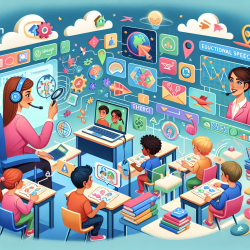In the rapidly evolving field of speech therapy and communication skills enhancement, staying abreast of the latest research findings is crucial for practitioners. The study "Normal Communication Acquisition: An Animated Database of Behaviours" offers invaluable insights into the development of communication skills, providing a rich resource for therapists and educators alike. This blog post aims to guide practitioners on how to leverage these research outcomes to improve their therapeutic practices or inspire further investigation into the nuances of communication development.
Understanding the Research
The study presents an exhaustive database of normal communication behaviors, detailing the milestones in communication development from infancy through childhood. By offering a comprehensive overview of how communication skills evolve, this research becomes an essential tool for identifying, understanding, and supporting the natural progression of these skills in various developmental stages.
Applying Research Findings in Practice
Implementing the outcomes of this research in clinical or educational settings can significantly enhance the effectiveness of communication skills therapy. Here are several ways practitioners can apply these findings:
- Baseline Assessment: Use the database as a reference to assess the communication skills of children at different ages, helping to identify any deviations from typical development patterns.
- Targeted Intervention Strategies: Develop intervention strategies that are aligned with the natural progression of communication skills, ensuring that therapy supports and enhances natural development.
- Parent and Educator Guidance: Share relevant findings with parents and educators to inform them about the typical milestones of communication development, empowering them to support children's communication skills effectively.
- Professional Development: Use the database as a learning tool for ongoing professional development, keeping abreast of the normal ranges of communication behaviors and adjusting therapeutic practices accordingly.
Encouraging Further Research
While the study provides a solid foundation, there is always room for further investigation to explore the intricacies of communication development. Practitioners can contribute to the field by:
- Conducting Longitudinal Studies: Track the communication development of a diverse group of children over time to gain deeper insights into the variability and range of normal communication acquisition.
- Exploring Intervention Impacts: Research the long-term effects of various intervention strategies on communication development to refine and optimize therapeutic approaches.
- Investigating Cultural Influences: Examine how cultural differences influence the acquisition and development of communication skills to develop more culturally responsive therapy practices.
By engaging with the research and exploring these areas, practitioners can contribute to a more nuanced understanding of communication development and more effective therapy strategies.
Conclusion
The "Normal Communication Acquisition: An Animated Database of Behaviours" study offers a treasure trove of information for practitioners looking to enhance their understanding and support of communication development. By applying these research findings in practice and pursuing further investigation, therapists and educators can significantly impact the lives of those they work with, fostering more effective communication skills in children and beyond.
To read the original research paper, please follow this link: Normal Communication Acquisition: An Animated Database of Behaviours.










